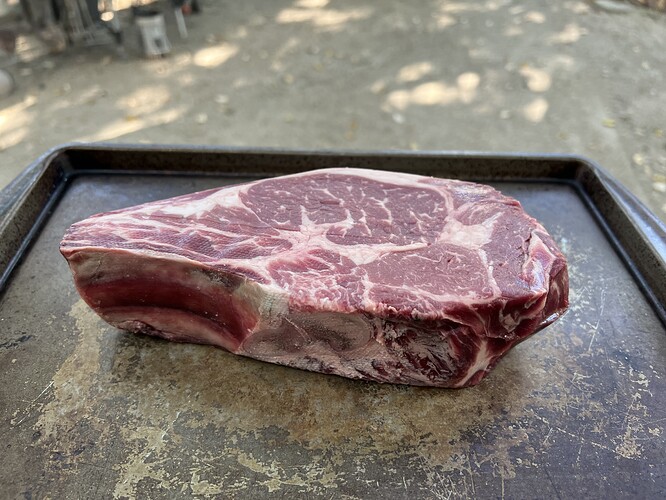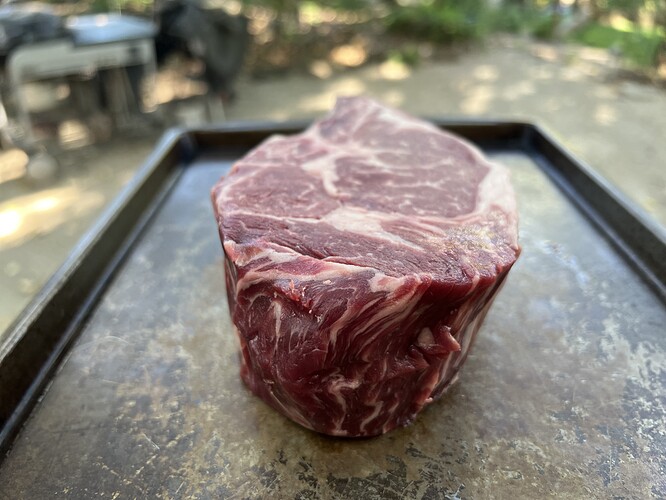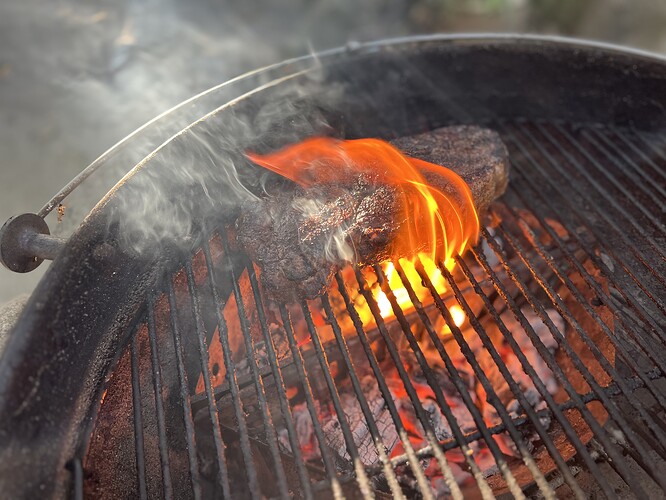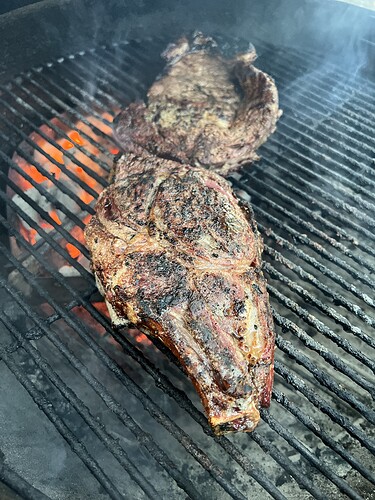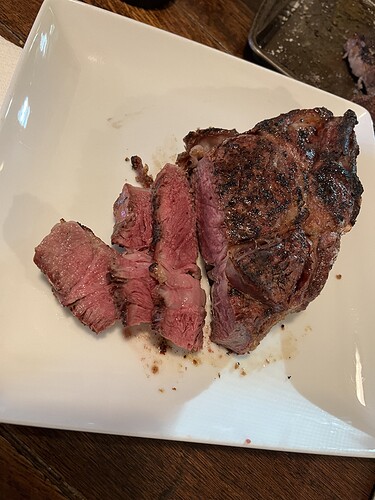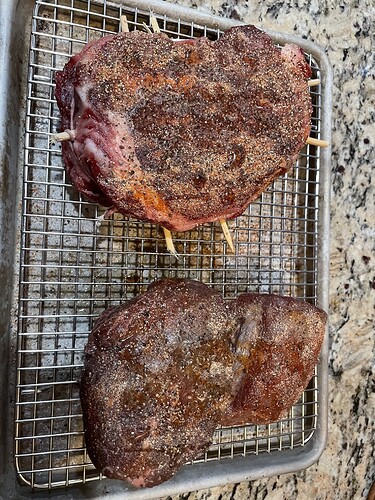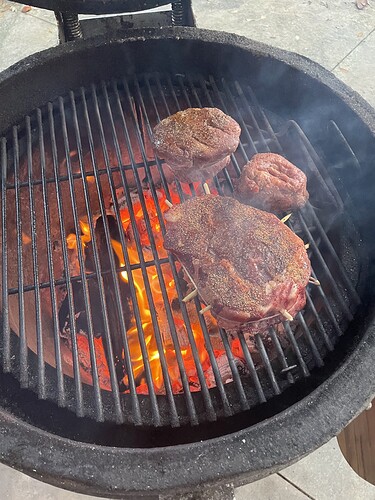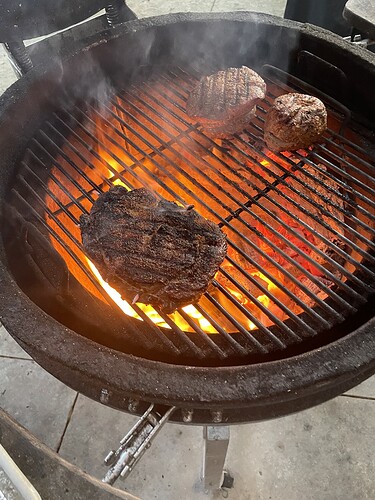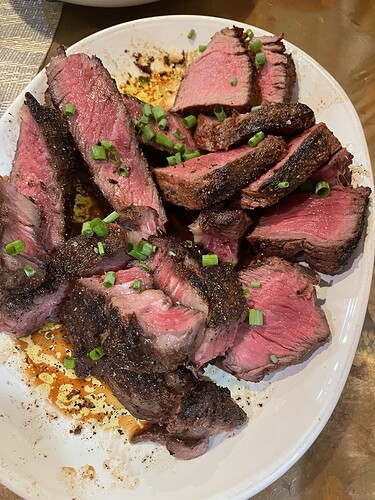I have never heard of, nor thought of, Reverse Searing steaks as an indoor method intended to reduce smoke. Simply put, I think it is the best way to get optimally tender steaks with the most consistent doneness throughout the cut (ie a nice rosy color from edge to edge with minimal gray banding along the exterior).
The above aside, I am a long time believer of this method and have been cooking steaks this way on my BGE for many years at this point. Common sense rules, and so long as you stick to some basics, you’ll find that they are hard to screw up. Having said that, I don’t think it’s necessary (or even beneficial really) to get super high temperatures for the searing portion. I used to think it was cool to get that thing up over 700*+ and have a jet like flame shooting out the top before putting the steak in to sear but, honestly, for me it’s not worthwhile nor do I think the result is better. I’m usually now targeting to be in the 450*-550* range for the searing portion.
My basic success formula looks something like this:
Set the Kamado up for direct grilling, with quality lump charcoal and a nice hunk of wood in there for smoke flavor (I like post oak the best for steaks, but pecan is nice too). I will on occasion use the heat diffuser plate in there and it does indeed extend the amount of time it takes for the steaks to come up in temp (resulting in more smoke flavor and ensuring all of the fat gets broken down/liquified), BUT then you have an issue later in the cooking process as you’ll have to remove it while hot and place it somewhere…not an impossible task, but generally speaking not something I want for a typical steak cook. If I’m putting a larger roast in there then sure, definitely put the diffuser in, but for a typical steak cook (even with my Flannery stuff) I just go with direct grilling set up and simply position the steaks in a cooler part of the grill to extend low-temp cooking time.
Season steaks to your liking and put them onto the Kamado at ~250* until a meat thermometer reaches somewhere between 100* and 110* internal temperature. I should note that if I had a pellet smoker, I’d likely do temps below 250* but I find that my BGE isn’t happy at temps much below ~250* and I don’t like the smoke flavor I get at those temps as I find that it tastes more acrid to me as a result of choking down the fire to more of a smolder.
I would suggest getting the cast iron grill grate, as those made a big difference in the crust I was able to achieve, but nothing will beat the crust you’ll get when you use a solid cast iron surface. I found a great circular cast iron pizza pan years ago that is perfect for a L size Kamado that is awesome and is a highly recommended addition as it’ll be cheaper than any OEM cast iron option.
Once you hit the 100*-110* range on your steaks, remove them and set them aside to rest while you open up your vents and crank the Kamado up to your searing temperature. This is where you’d have to remove the diffuser if you’re using one, and also where you’d add your cast iron pan on the grate to heat up.
Once you’re at temp (and give it a good while if adding the cast iron pan to ensure it heats up fully), then it’s show time and I like to put the steaks back on over direct fire and turn them every 1-2 minutes until I get to my desired temperature.
From there, all you have to do is remove them, sip your wine like the champ that you are and be prepared to throw out your elbow giving all of the high fives to your friends and family as they ooh and awe over the crust you achieved atop a perfectly tender, mid-rare steak from end to end.
